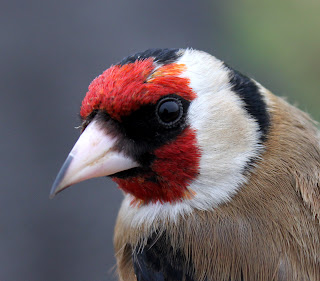The morning dawned just a touch too breezy for ringing on the moss, where although the willow trees are in bud but no leaf to deter a breeze from wafting a net around. So in the sunny warmth the job was topping up the Niger seed followed by an hour or two birding.
Shy Yellowhammers are always a challenge to photograph, with today 10 or 12 individuals cautiously and almost noiselessly approaching the shooter’s pheasant feeders for left-over wheat on the grass below; wheat is a good size for a Yellowhammer’s chunky bill to tackle, as well as being a nutritious meal, and although the birds came back time and time again they proved very difficult to photograph.



The wheat proved an attraction to other birds too as Chaffinches, Goldfinches and a single Greenfinch came for a look. The local Linnet flock was back up to 100+ birds today, sticking to a weedy patch of ground, only flying noisily into the trees a couple of times when spooked by something unseen. Around the Niger feeders were the usual 8 or 10 Goldfinches, a few Chaffinch and brief calls of Siskin overhead.


A walk north and up the plantation edge found 3 Grey Partridge, 4 Skylark, 4 Blackbirds, 2 Mistle Thrush, a Kestrel and a Sparrowhawk, then as the sun created the thermals the Buzzards came out to play. I counted 8 in the air at once, two groups of four with much mewing and calling as they sorted out their differences for the coming weeks. Click on the “xeno canto” button, there’s even a Willow Warbler in sweet song to remind us of Spring.






























































